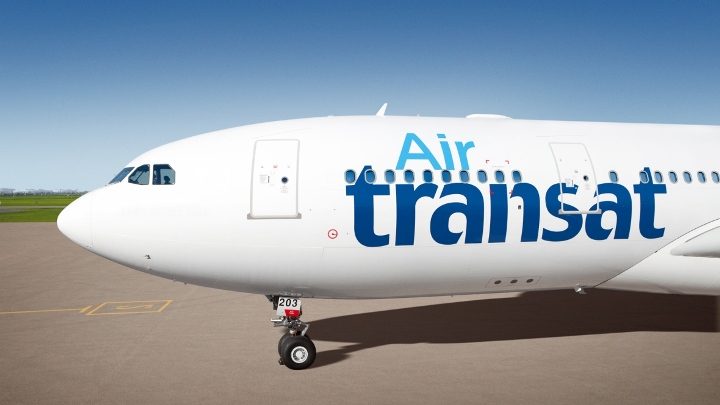
An Air Transat plane taxis on the tarmac
Two pilots have been arrested on suspicion of being under the influence of alcohol shortly before they were due to fly a transatlantic passenger jet.
Concerns over the pair’s behavior were raised at Glasgow Airport shortly before the Air Transat A310 with 250 passengers on board was due to depart for Toronto on Monday afternoon.
Officers arrested the men, aged 37 and 39, on suspicion of being “impaired through alcohol” before they were due to take off at 1pm.
Police Scotland said the pair will appear in custody at Paisley Sheriff Court later.
The Canadian airline confirmed the arrests and said passengers had been put up in hotels while alternative flights were arranged.
F-16 records the dramatic moment when its unconscious pilot is saved from certain death by the aircraft’s Automatic Ground Collision Avoidance System (Auto-GCAS). The event is considered the fourth confirmed “save” of an aircraft by the system since Auto-GCAS was introduced into the Air Force F-16 fleet in late 2014. Developed over almost three decades by Lockheed Martin, NASA and the Air Force Research Laboratory, the system is designed to automatically execute a ground-avoiding maneuver if it detects an impending collision. Aimed at reducing accidents caused by controlled flight into terrain by 90%, the system completed research and development under Air Combat Command’s Fighter Risk Reduction Program in 2010. It began transitioning to the Block 40/50 F-16 fleet in September 2014 as part of the M6.2+ Operational Flight Program (OFP) software update. Auto-GCAS continuously compares a prediction of the aircraft’s trajectory against a terrain profile generated from onboard terrain elevation data. If the predicted trajectory touches the terrain profile, which is indicated at the 26 sec. mark on the video at the moment when the two chevrons on the HUD come together, the automatic recovery is executed by the Auto GCAS autopilot.
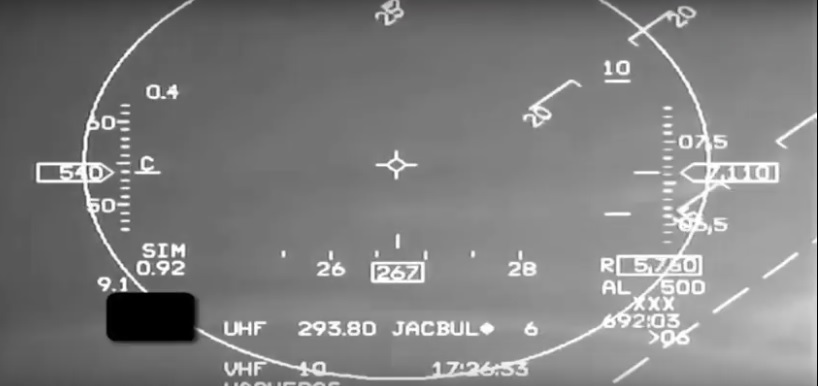
This newly declassified video footage from the head-up-display of a U.S. Air Force Arizona Air National Guard…
The automatic recovery maneuver consists of an abrupt roll-to-upright and a nominal 5-G pull until terrain clearance is assured. In this instance, an international F-16 student pilot was undergoing basic fighter maneuver training with his USAF instructor pilot in two separate F-16s over the U.S. southwest. The student rolled and started to pull the aircraft but experienced G-induced loss of consciousness (G-LOC) as the F-16 hit around 8.3g. With the pilot now unconscious, the aircraft’s nose dropped and, from an altitude of just over 17,000 ft., entered a steepening dive in full afterburner.After only 22 sec., the F-16 was nose-down almost 50 deg. below the horizon and going supersonic. The shocked instructor called “2 recover!” as the student passed 12,320 ft. at 587 kt. Two seconds later, with the nose down in a 55-deg. dive, altitude at 10,800 ft. and speed passing 613 kt., the worried instructor again calls “2 recover!” In a little less than another 2 sec., as the now frantic instructor makes a third call for the student pilot to pull up, the Auto-GCAS executes a recovery maneuver at 8,760 ft. and 652 kt.
The student pilot at this point comes around and pulls back on the stick, momentarily increasing Gs beyond the Auto-GCAS standard recovery level of 5 to 9.1. Minimum altitude by now is around 4,370 ft., with as little as 2,940 ft. indicated on the radar altimeter. From loss-of-control to recovery takes just under 30 sec. The Edwards AFB-based 416th Flight Test Sqdn.—which evaluated, perfected and tested the system prior to fleet release—is currently working on a follow-up Automatic Integrated Collision Avoidance System (Auto-ICAS) that combines the recently developed Automatic Air Collision Avoidance System (Auto-ACAS) with the ground protection provided by Auto-GCAS. By making the air-to-air collision avoidance system “ground aware,” the Auto-ICAS will provide the world’s first all-aspect automatic protection system for a production aircraft. The 416th is also working on a Hybrid Flight Control Computer that will enable older analog F-16s to use digital applications like Auto-ACAS. VIDEO BELOW: During a 1-hr., 20-min. flight on the Air Force Research Laboratory/NASA F-16 testbed in 2010, Guy Norris observed a variety of scenarios, many flown at extremely low altitudes and high speed, designed to show how the automatic ground collision avoidance system will prevent mishaps while allowing the full range of tactical flying without triggering nuisance fly-ups.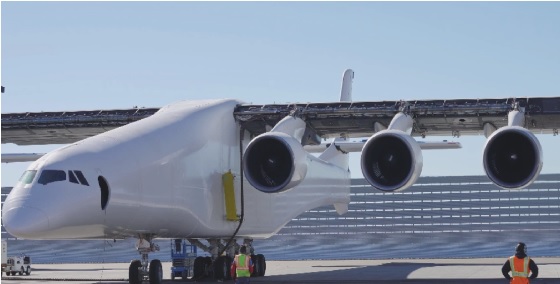
The colossal Stratolaunch carrier plane rolled out of its hangar at the Mojave Air and Space Port in Mojave, California, today (May 31) to undergo fueling tests. It’s the first public look at the full craft – which is designed to launch rockets into orbit from the sky – since construction began.
“We’re excited to announce that Stratolaunch aircraft has reached a major milestone in its journey toward providing convenient, reliable, and routine access to low-Earth orbit,”
Microsoft’s co-founder jumps into the billionaire space race with a plane to launch rockets. It’s not just ego: There’s a lucrative new industry up there.
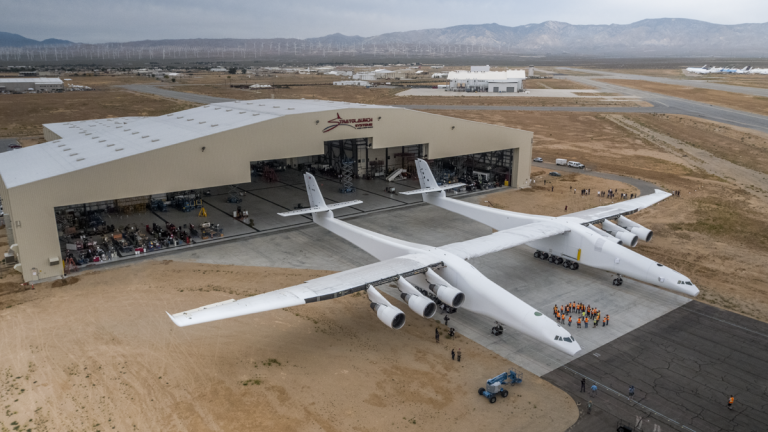
Stratolaunch Systems Corp. CEO Jean Floyd said in a statement. “This marks the completion of the initial aircraft-construction phase and the beginning of the aircraft ground- and flight-testing phase.”
The Stratolaunch carrier plane is designed to launch rockets into orbit from an altitude of 30,000 feet (9,100 meters).
Initially, the plane will carry a single Pegasus XL rocket built by Orbital ATK, but the craft will eventually be able to carry up to three of those boosters simultaneously, Floyd said. Stratolaunch Systems has been quietly designing and building the rocket-toting plane over the last few years.
“Over the past few weeks, we have removed the fabrication infrastructure, including the three-story scaffolding surrounding the aircraft, and rested the aircraft’s full weight on its 28 wheels for the first time,” Floyd said. “This was a crucial step in preparing the aircraft for ground testing, engine runs, taxi tests and, ultimately, first flight.”
Allen founded Stratolaunch Systems in 2011 with the goal of making access to low-Earth orbit “more convenient, reliable and routine,” according to the company’s tagline. Allen teamed up with Scaled Composites, a Mojave-based aerospace company founded by Burt Rutan, to build the Stratolaunch carrier plane. Allen bankrolled Scaled Composites’ SpaceShipOne space plane, which went on to win the $20 million Ansari X Prize for private reusable crewed spacecraft. Stratolaunch’s launch profile resembles that of SpaceShipOne, which was carried to launch altitude by its own mothership, called the WhiteKnight. The Stratolaunch plane is a twin-boom aircraft with a wingspan of 385 feet (117 m), a length of 238 feet (72 m) and a tail height of 50 feet (15 m). The massive plane weighs 550,000 lbs. (250,000 kilograms) by itself and a mind-boggling 1.3 million lbs. (590,000 kg) when fully loaded with a rocket payload. It takes six Pratt & Whitney PW4056 jet engines to power the monster jet.

“Over the coming weeks and months, we’ll be actively conducting ground and flight-line testing at the Mojave Air and Space Port,” Floyd said. “This is a first-of-its-kind aircraft, so we’re going to be diligent throughout testing and continue to prioritize the safety of our pilots, crew and staff. Stratolaunch is on track to launch actual missles soon.”
Engine bleed air has a variety of uses on modern aircraft.
For decades, aircraft have used engine bleed air for a variety of purposes, spanning everything from engine starting to cabin pressurization to anti-icing. Here’s how engine bleed air works.Hot, High-Pressure Air
When air enters a turbine engine, it goes through a series of compressors, which significantly increase the air temperature and pressure before mixing that air with fuel and igniting it. A small portion of that compressed air, however, does not enter the combustion chamber and instead is redirected from the engine via valves, ducting and manifolds to various other areas of the aircraft. This engine bleed air is very hot, between 200 to 250 degrees C, and very high in pressure, around 40 psi.”
Cabin Pressurization and Air Conditioning
Because the air at high altitudes is too thin to meet human oxygen needs, engine bleed air is used to provide appropriate cabin pressurization as well as air conditioning. After leaving the engine and passing through the air-conditioning pack, where it is cooled, this bleed air is combined with recirculated cabin air before it enters the cabin.
Anti-Icing
High-temperature bleed air is routed to the leading edges of the wing and empennage, as well as to key engine components such as the inlet guide, where it serves as a safeguard against ice accumulation.
Water and Hydraulic System Pressurization
Engine bleed air is used to provide the pressurization needed for the water and hydraulic system reservoirs. Such pressurization propels drinking water from the holding tank to the cabin and ensures the smooth flow of hydraulic fluid to the pump inlet in the absence of sufficient atmospheric pressure at high altitudes.
Engine Start
High-pressure bleed air from the auxiliary power unit, a non-thrust-producing engine often located in the rear of the aircraft, provides the pneumatic energy required to start the blade rotation in a main engine.
Thinking about becomming a pilot?
Decide what you want to fly. FAA’s rules for getting a pilot’s license (certificate) differ depending on the type of aircraft you fly. You can choose among airplanes, gyroplanes, helicopters, gliders, balloons, or airships. If you are interested in flying ultralight vehicles, you don’t need a pilot’s license.
Purchase your bundled private pilot kit…[most cost friendly CLICK HERE]
- Certification
- Frequently Asked Questions
- Handbooks and Manuals
- Testing
- Training
If you didn’t find what you need above, please contact your nearest FAA Flight Standards District Office. For information on piloting careers, including job outlook and rates of pay, visit the Bureau of Labor Statistics.
Model Insists On Flying Naked
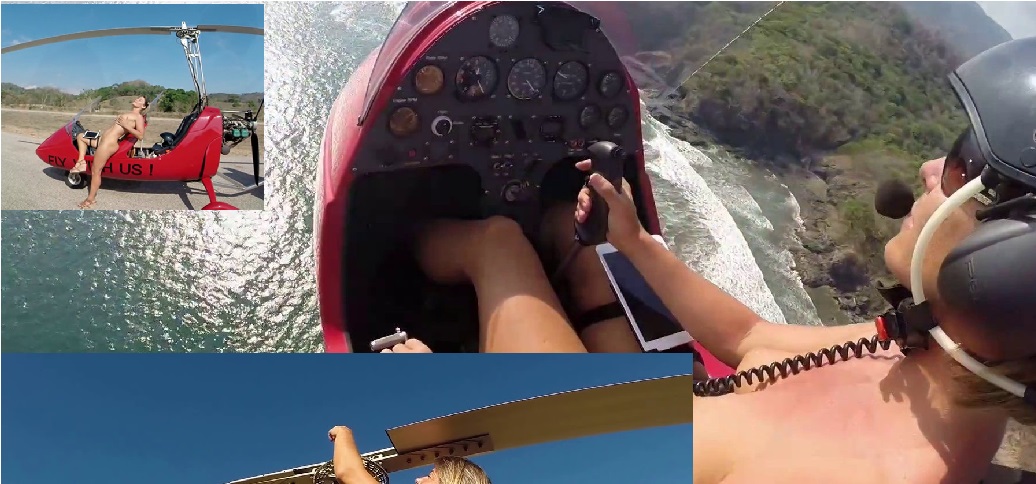
Flying is a terrifying experience for many people. They worry about having a bumpy flight, if the plane is going to crash, and why we have to be up so high. Even if you never enjoyed it, flying with a naked beautiful woman might make me start to enjoy it a little more.
In the video Gyrocopter Girl, an attractive, completely nude woman decides to take to the skies and enjoy the scenery. Well, she isn’t the only one enjoying the beautiful views. I’ve been in a convertible before traveling at a high rate of speed and while I did enjoy the window blowing against my face, I can’t imagine what kind of sensation it is to feel the wind blowing on a pair of fantastic tits.
The woman flies with such ease, you have to think she’s done this before. I don’t know if this place offers tours or not, but I’d be willing to pay more for the naked pilot package. Though, I will admit I would have a hard time paying attention to the scenery and would constantly be asking if I could see the cockpit.
Flying can be such a stressful experience. I would think that having a gorgeous pair of naked boobs at the control would calm me down a great deal. Maybe this is something all the major airlines should consider?


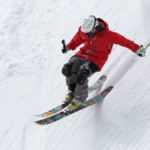














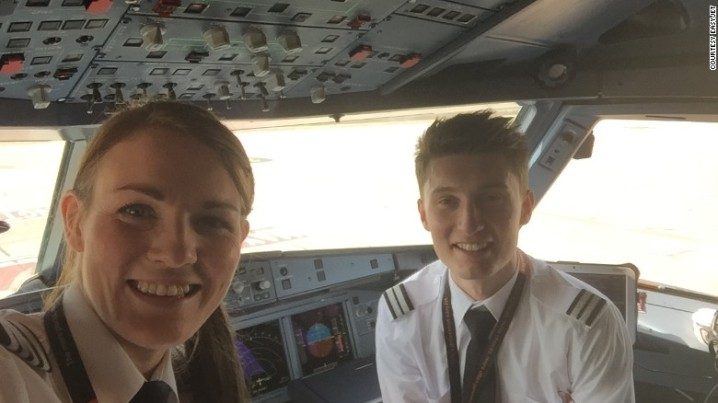



27 thoughts on “Pilots arrested on suspicion of being too drunk to fly”
Comments are closed.